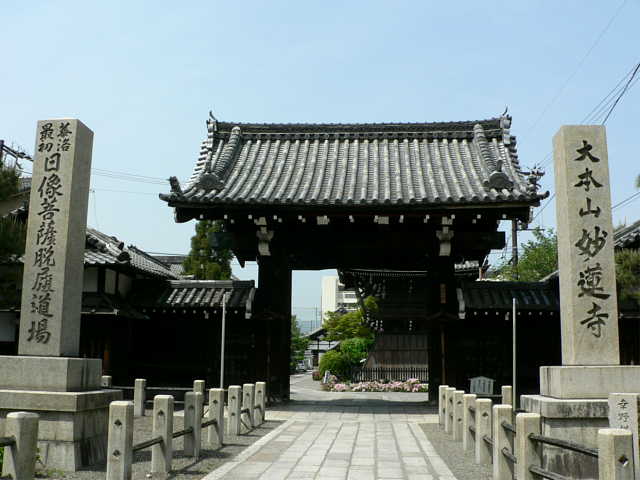 |
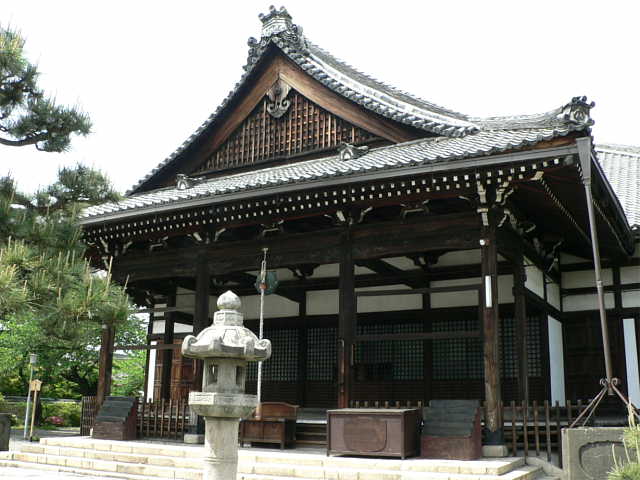 |
| 「山門」 | 「本堂」 |
|---|---|
| San-mon | Hondo |
| 拡大 画像Click | 拡大 画像Click |
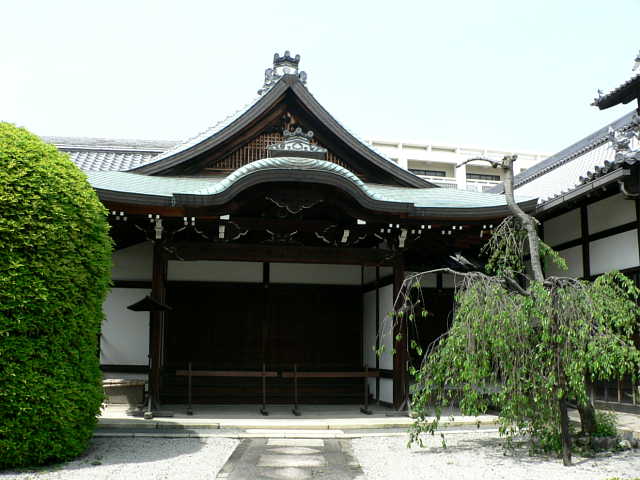 |
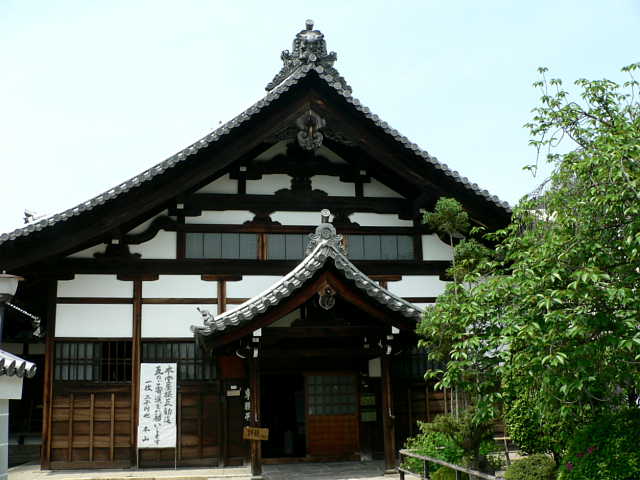 |
| 拡大 画像Click | 拡大 画像Click |
|---|
 |
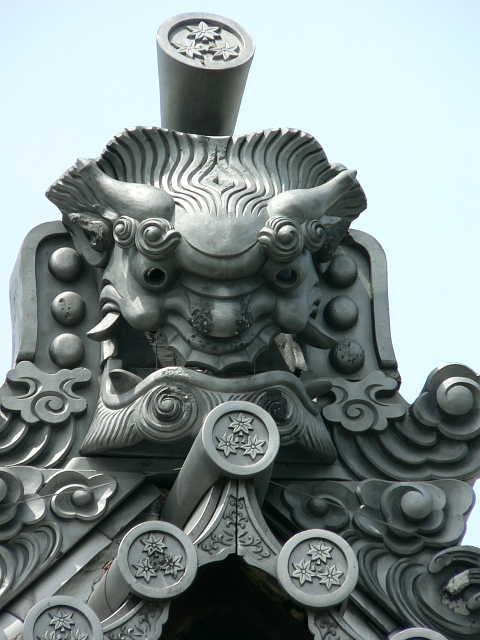 |
| 「鐘楼」 | |
|---|---|
| Shourou | |
| 拡大 画像Click | 拡大 画像Click |
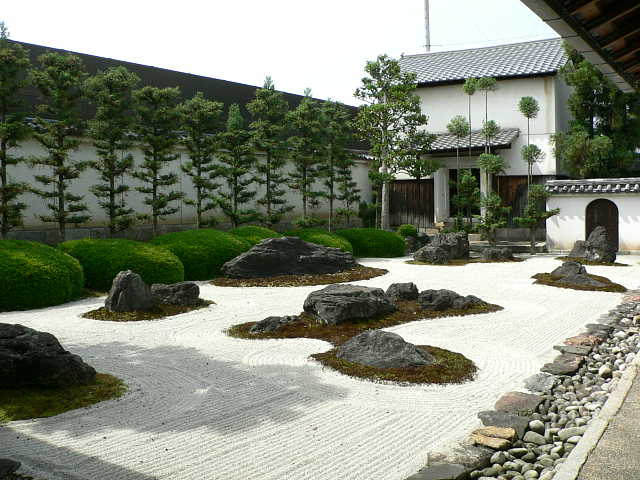 |
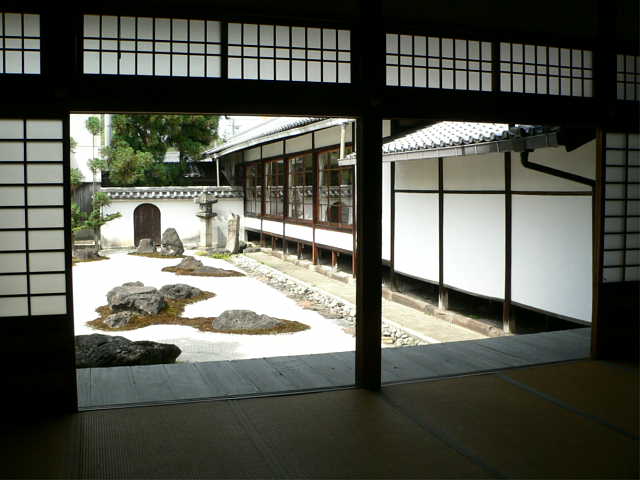 |
| 「十六羅漢石庭」 | 「十六羅漢石庭」 |
|---|---|
| Juroku-Rakan Sekitei | Juroku-Rakan Sekitei |
| 拡大 画像Click | 拡大 画像Click |
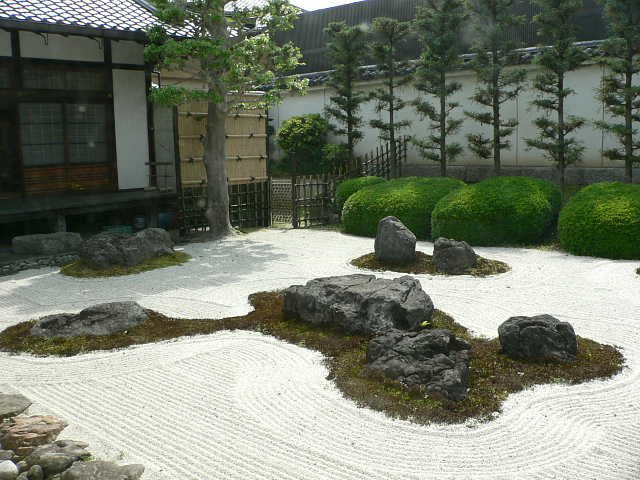 |
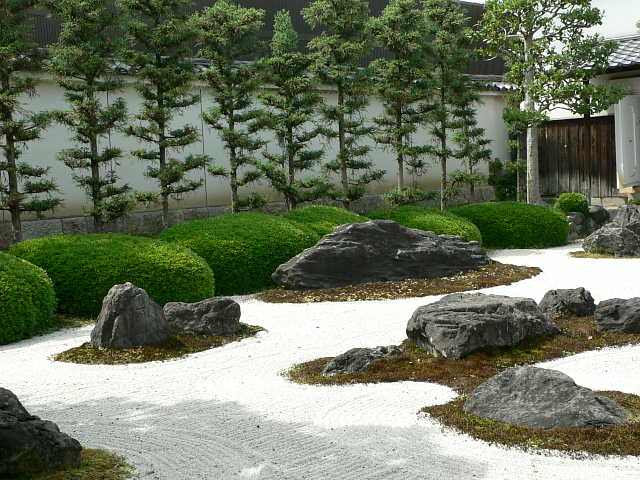 |
| 「十六羅漢石庭」 | 「十六羅漢石庭」 |
|---|---|
| Juroku-Rakan Sekitei | Juroku-Rakan Sekitei |
| 拡大 画像Click | 拡大 画像Click |
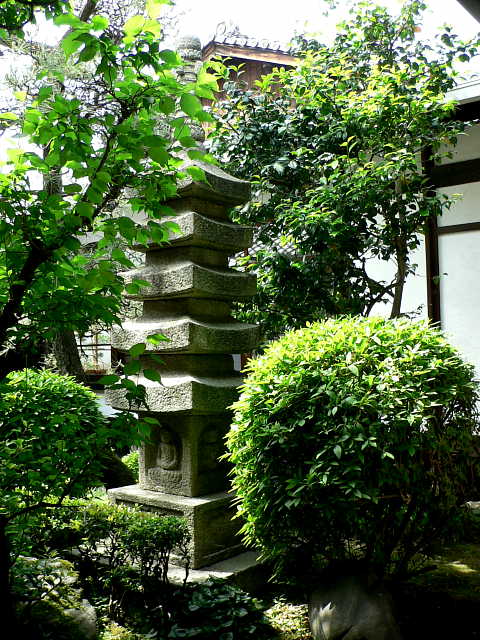 |
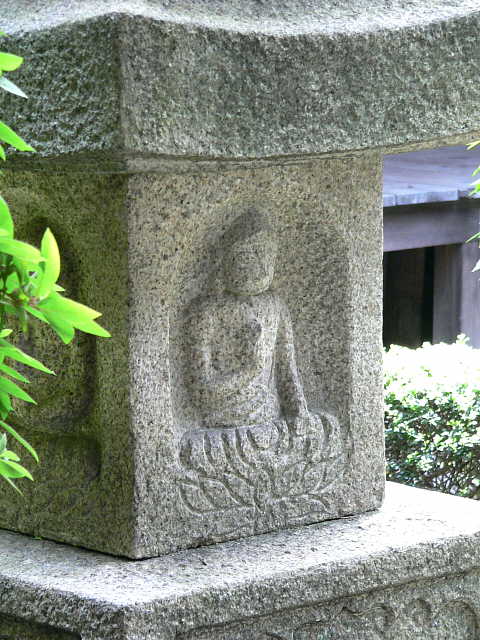 |
| 拡大 画像Click | 拡大 画像Click |
|---|
京都 妙蓮寺(みょうれんじ)
Myorenji Temple
京都市上京区寺ノ内通大宮東入ル
Oomiya-Higashi-Iru,Teranouchi-Dori,Kami-Gyo-Ku,Kyoto
|
大本山 妙蓮寺
●沿革 大本山妙連寺は、宗祖日蓮大聖人より帝都弘通宗義天奏の遺命を受けた日像聖人によって、 永仁2年(1294)に創建された。 日像聖人が遺命を果たすため鎌倉より京都へ上られた時、五条西洞院の柳酒屋は深く聖人に帰依し、 未亡人は邸内に一字を建立して聖人を請じ、卯木山妙法蓮華寺と称した。 これが妙蓮寺の縁起である。(柳の文字を二つに分けて卯木山という。) その後、たびたびの法難にあい衰退していたが、応永年間(1420年頃)本迹勝劣、 本迹一致の論争を契機に妙顕寺を退出した日慶聖人によって柳屋の地に本門八品門流として再興される。 その後、寺域を堀川四条に移し、皇室ならびに伏見宮家と関係深い日応僧正を迎えるにおよび、 皇族始め足利将軍義尚等の参詣多く、また今出川家の公達日忠聖人は、三井寺より改宗して当寺に投じて学室道輪寺を創立し、 本化教学の道場を開く。 ここにおいて当寺の法運は隆昌を極め、山門の様式も格式高いものとなった。 天文5年(1536)には、法華宗の隆昌を妬む比叡山天台宗を筆頭に諸宗の僧俗10万人によって襲撃され、 妙蓮寺をはじめとする日蓮大聖人門下21本山は、ことごとく灰燼に帰し堺に立ち退いた。 天文11年(1542)大宮西北小路に復興され、天正15年(1587)には、 豊臣秀吉の聚楽第造営に際して現在地に移転した。 当時は、1k㎡の境内に塔頭27ヶ院を有する大寺院であったが、天明8年(1788)の大火によって、 そのほとんどが焼失し、わずかに宝蔵・鐘楼を残すのみとなった。 寛政元年より漸次復興して、現在に至り、塔頭8ヶ院を有す。
●The History of Myoren-ji Head Temple Myoren-ji Head Temple was founded in 1294 by Saint Nichizo, who was entrusted with missionary work in the capital of Kyoto by the will of the Great Saint Nichiren, the founder of the Nichiren sect. It fell into decay through many religious accidents and persecutions, but was reestablished by Saint Nikkei around 1420. Subsequently it grew in prosperity, being frequently visited by members of the Imperial family, Shogun Yoshihisa Ashikaga and other important persons, and its sanmon (main gate) was accordingly rebuilt in a dignified style. In 1536, 21 head temples under the Great Saint Nichiren, including Myoren-ji Temple were burnt down to ashes by a hundred thousand cleric and laic people of various sects spearheaded by the Tendai sect, which envied the Nichiren sect for its prosperity, and Myoren-ji Temple took refuge in Sakai. It was restored in 1542 and then transferred to the present site in 1587 when Hideyoshi Toyotomi constructed the Jurakudai Palace. Though it was a large temple having 27 sub-temples in its precincts of 1 km2, all the buildings were destroyed by a disastrous fire 1788, except a treasure house and a belfry. The building have been gradually restored since 1789 up to the present day. The temple now has 8 sub-temples.
●鐘楼 Belfry 元和3年(1617)の建立全国的にも数少ない本格的な袴腰型鐘楼で、 日本建築史上、江戸時代を代表する貴重な建造物である。 Constructed in 1617. One of the skirt-shaped Buddhist belfries which are rare in Japan, this belfry is a valuable example of Japanese architecture in the Edo Period.
●大本山妙蓮寺山門 文政元年(1818)に、禁裏より拝領し建立する。両袖番所付山門は、希にみる格調の高い雄姿を誇る。
●Sanmon(Main Gate) of Myoren-ji Head Temple This gate was originally built in the imperial palace and in 1818 it was donated to Myoren-ji, and moved there. The gate has exceptional dignity, with guard houses on both sides.
●妙蓮寺蔵松尾一切経 平成5年(1993)夏、妙蓮寺土蔵から松尾一切経が発見された。 松尾一切経は、永久3年(1115)頃より、松尾神社の神主秦宿祢親任、その子秦宿祢頼親が願主となり、 長治2年(1143)に完成された。 安政4年(1857)に妙蓮寺の熱心な檀徒嶋田弥三郎義忠の寄進により妙蓮寺の寺宝となる。 平成9年(1997)経櫃とともに三千余巻が重要文化財に指定された。 ●Matsunoo Issai-kyo (Sutra) In the summer of 1993, this sutra was found in the storehouse of Myoren-ji. Around 1115 the Head Priest of Matsunoo Shrine, Hatano Sukune Chikato began to write the sutra as a prayer, and his son, Yorichika, took over the task and completed the sutra in 1143. The sutra was dedicated to Myoren-ji by Yasaburo Yoshitada Shimada, a keen parishioner of the temple, and became one of its valuable treasures. The sutra (over 3,000 volumes) and its box were designated as an Important Cultural Property in 1997.
●立正安国論(重文) 本阿弥光悦写筆 この立正安国論は、始聞仏乗義(重文)と共に、日源聖人の依頼によって、元和5年(1619)に本阿弥光悦が書写したものである。 日蓮大聖人の立正安国論の主旨は、幕府に法華経の精神に基づいた政治を要求すると共に、国民に正しい教えによる世界平和実現の道を説くものとして名高い。 ●Rissho Ankoku Ron (Important Cultural Property) (The Eatablishment of Righteouness and the Security of the County) copied by Koetsu Honnami Koetsu Honnami copied “Rissho Ankoku Ron” and another book entitled “Shimon Butsujo Gi" (important cultural property) in 1619 in compliance with Saint Nichigens request. “Rissho Ankoku Ron” by Saint Nichiren is well-known as a book in which he required from the Shogunate political ethics based on the spirit of the Lotus Sutra and urged people to realize world peace in observance of the teachings of Buddha.
●十六羅漢石庭 桂離宮の造園を指図した妙連寺の僧、玉淵坊日首の作である。中央西寄りの大きな青石は、臥牛石といい、 秀吉公によって伏見城より移された名石である。 この庭は、火災による損傷が激しかったが、近時に至って造園当時の姿に復元された。 ●Rock Garden of Sixteen Arhats This garden was laid out by a priest of Myoren-ji Temple named Gyokuenbo Nisshu, who directed the construction of the gardens of the Katsura Imperial Villa. A big blue rock a little west of the center is a noted rock called “the Rock of a Lying Bull” and was transferred from Fushimi Castle by Hideyoshi, a feudal lord who unified Japan. The garden was once heavily damaged by a fire but was restored to the original state recently.
●妙蓮寺椿の図 海北友松筆 ■妙蓮寺椿=室町時代、連歌師として有名な宗祇(1421~1502)が、妙蓮寺椿の一枚を写生し、 その上に“余の花はみな末寺なり妙蓮寺”と賛した掛軸の写しが、妙蓮寺記なるものに載せられている。 宗祇の在京時代は、妙蓮寺が皇室と関係深い日応僧正を迎えて隆盛を極めた時代と一致し、 即ち妙蓮寺椿の名称は、この時よりすでに存在し、500年以上の歴史をもつものである。 ●The Picture of Myoren-ji Tsubaki(Camellia) believed to be reproduced by Kaihoku Yusho ●Myoren-ji Tsubaki (Camellia) In the Muromachi Period, Sogi, a famous renga poet (1421-1502), sketched a camellia at Myoren-ji Temple and composed a short poem in praise of it. “Myoren-ji camellias in all the other places are 'branches' of those at this temple”. This temple became more prosperous, during Sogi's stay in Kyoto, due to the fact that the reigning bishop Nichio was related with the Royal family. This sketch proves that this species of camellia is at least 500 years old.
●法華経(重文)●後深草天皇御宸翰(重文) 伏見天皇御宸翰 伏見天皇が、御父後深草天皇の崩御に際し、御父君の遺書(御消息171通)の背面に法華経八巻を書写されたものである。 伏見天皇は、とくに和歌、書道に秀でられ、その書風は伏見院流として名高い。 これを納めてある箱は、中国伝来の沈金蒔絵の逸品で、重文である。 ●The Lotus Sutra (Important Cultural Property) hand-written by the Emperor Fushimi. The Emperor Fushimi excelled in calligraphy and the composition of poems, and his calligraphy style is noted and referred to as “the retired Emperor Fushimi style”. On the demise of his father, the Emperor Gofukakusa, he copied the eight volumes of the Lotus Sutra on the back of his father's 171 notes left behind.
●「春」の野 幸野豊一画「四季の襖絵」 宗祖日蓮大書の第七百遠忌に、幸野豊一氏により奉納される。 春の野(12面)、夏の池(8)、秋の山(6面)、冬の川(8面)にて四季を表現し、 奥書院の襖絵として昭和56年(1981)に完成した。 今日の ●Spring Field Painted by Toyokazu Kono This series of screen paintings was dedicated by Toyokazu Kono to commemorate the 700th anniversary of the demise of Saint Nichiren. The paintings represent the four seasons : Spring Field on 12 panels, Summer Pond on 8 panels, Fall Mountains on 6 panels, and Winter River on 8 panels. The paintings were completed as screens for the inner study of the temple in 1981。
●障壁画(重文) 長谷川等伯一派 長谷川派の代表的作品で、柳の図4面、鋒杉の図4面、松桜の図30面、桜の図小襖4面、全42面にわたる。 この障壁画は、長谷川等伯様式の雄大さと久蔵様式の繊細さとを統合した特徴を持ち、妙蓮寺独特のものである。 ●Screen Paintings (Important Cultural Property) painted by the School of Tohaku Hasegawa Masterpieces of the Hasegawa school on 42 panels:willow trees on 4 panels, hoko-sugi (Japanese cedars shaped like a spearhead) on 4 panels, pine trees and cherry blossoms on 30 panels and cherry blossoms on 4 small panels. The characteristic integration of the magnificent Tohaku style and the delicate Kyuzo style is unique to the screen paintings of Myoren-ji Temple. パンフレット より
本門法華宗の大本山で、卯木山と号し、日像上人(にちぞうしょうにん)を開基とする。 永仁3年(1295)に、柳屋仲興道妙蓮法尼が日像上人に帰依して、西洞院五条の邸を寺に改め、 柳寺と称したのが当寺のはじめで、永享(えいきょう)年間(1429~1440)に、日存、日 動、日隆、日慶らが、大宮通四条下るに伽藍を移築造営し、妙蓮寺と改めた。 その後、たびたび寺地をかえ、天正15年(1587)豊臣秀吉の聚楽第(じゅらくだい)造営の とき、いまの地に移った。現在の建物は、天明の大火(1788)後の再建である。 玄関、奥書院の襖絵は、長谷川等伯(とうはく)一派の筆といわれる濃彩の金碧(こんぺき)画で、 庭内の奇石とともに秀吉が寄進したものと伝える。なお、寺宝には、本阿弥光悦(ほんあみこうえ つ)の筆になる立正安国論(りっしょうあんこくろん)(重要文化財)などがある。 京都市 案内板より
|
| ホーム| 神社・仏閣めぐり| 初詣おすすめスポット| 御利益別寺社一覧| 御利益グッズ| 言い伝え |